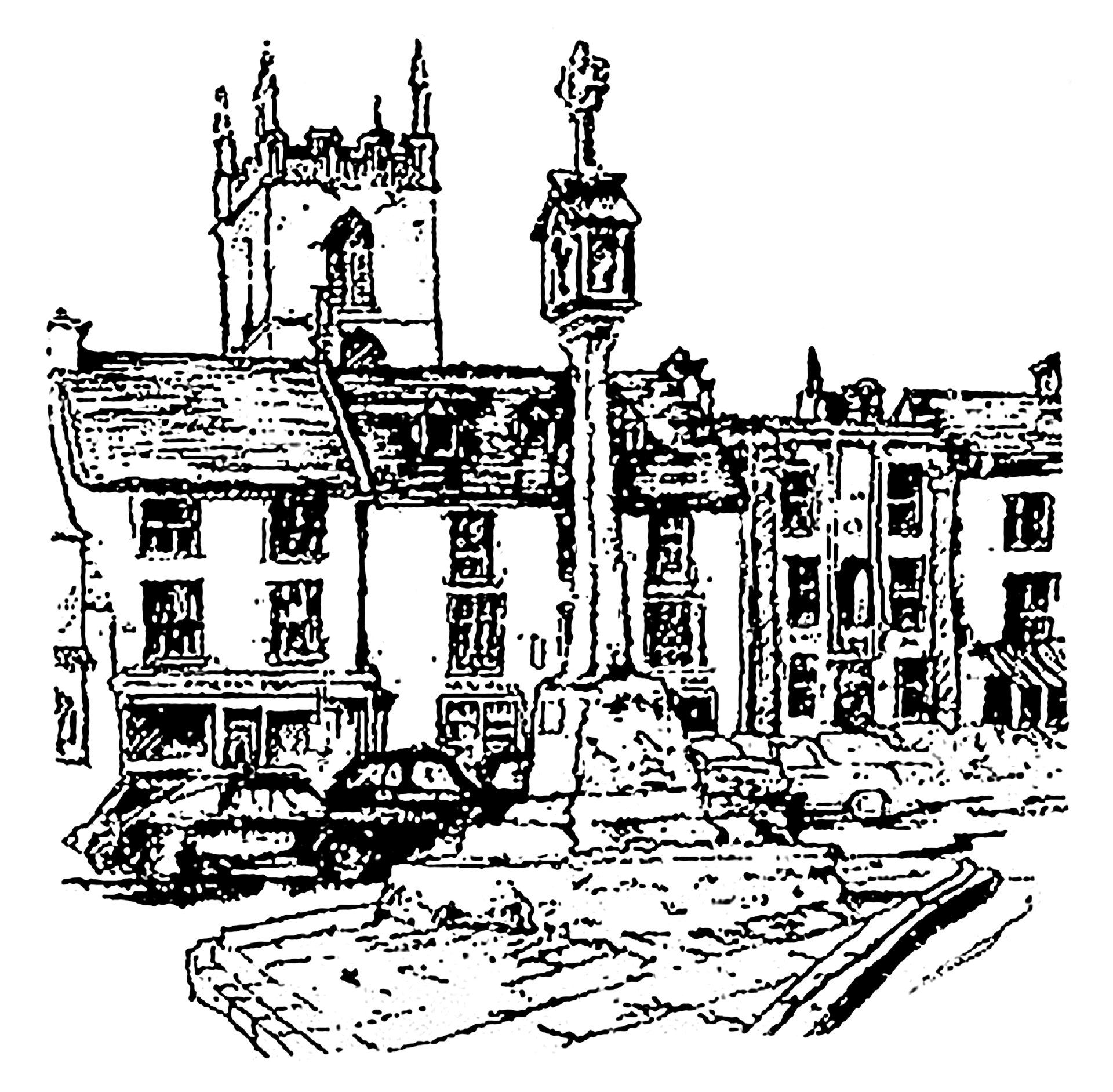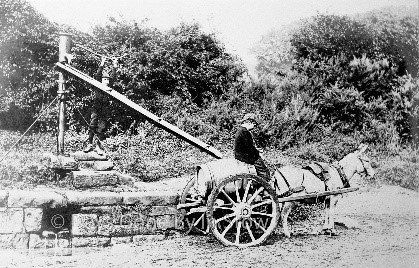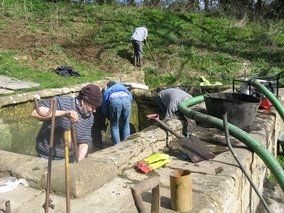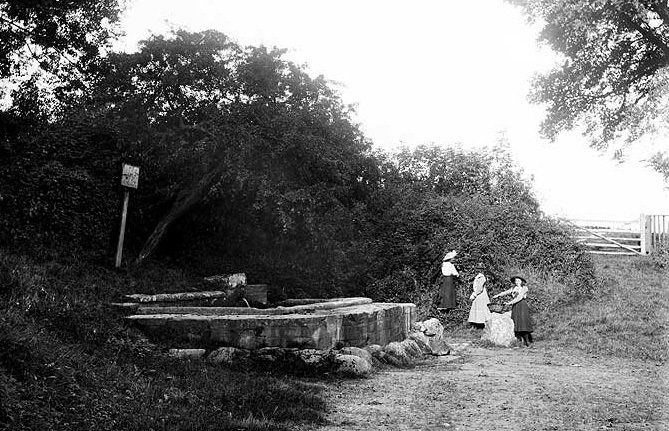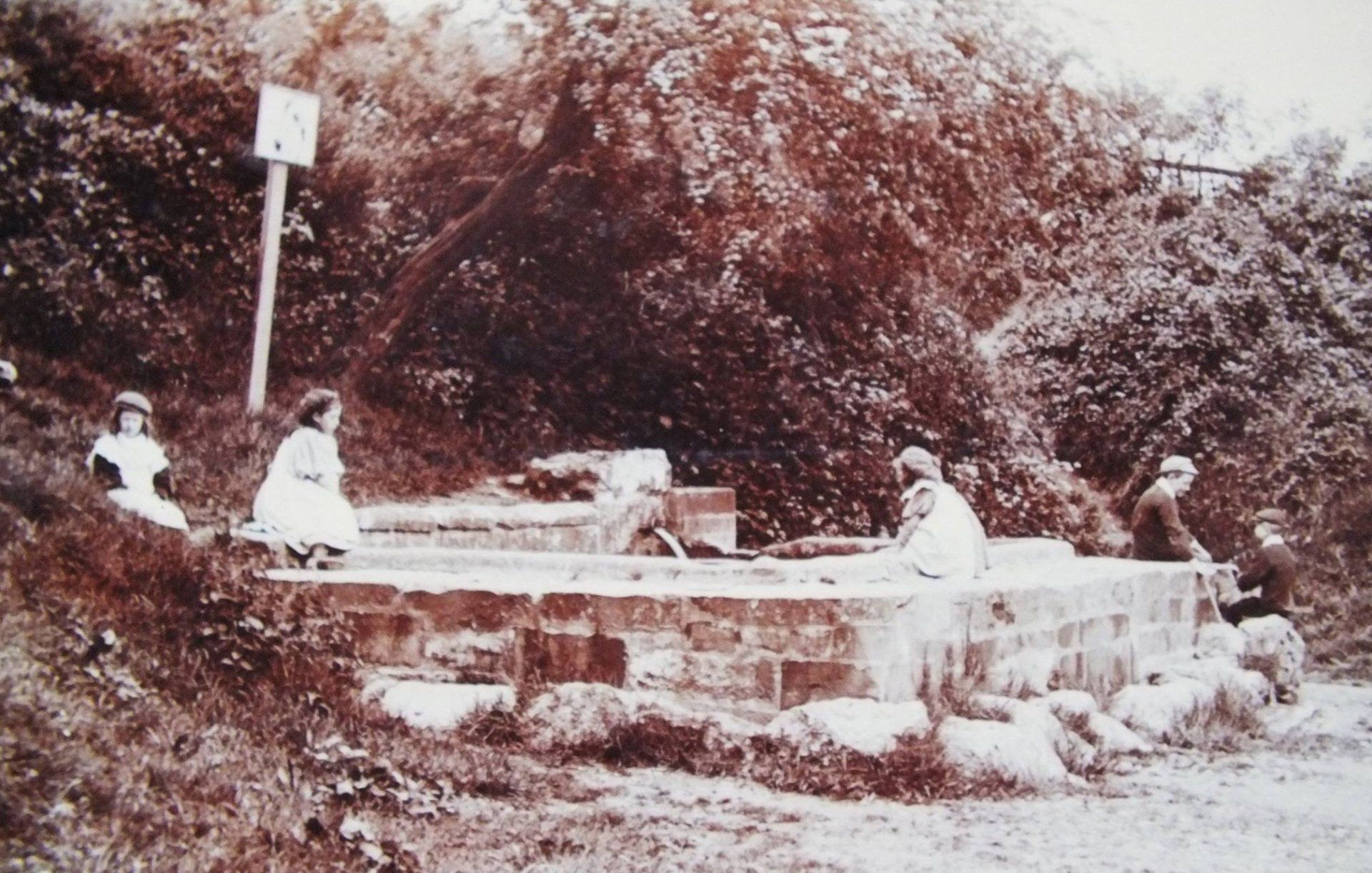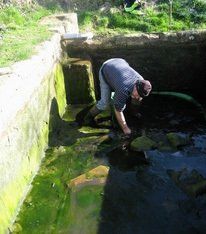There are 3 natural springs here – upper well (the main well or white pump), lower well (a smaller well a further 125m down the lane and known as the red pump) and the Humble Bee well near the bottom of the hill in the field. The people of Broadwell claimed prior right to these and there were frequent disputes.
Water would be hauled up to Stow. People with water carts made a good business by selling water in the square and women carried pails and yokes. During the 18th century the well became overused and because of its open nature was often contaminated.
In about 1800 a local man called Clifford laid wooden pipes from a spring in Lower Swell (near the Lower Swell Spa) and a windmill (later a horse mill) to draw water up the pipes. This system only lasted about 35 years before it deteriorated.
In 1836 Mr Charles van Notten-Pole formed a company to build a waterwheel taking water from Upper Swell. This proved to be very expensive and once again wasn’t successful. The original upper and lower wells were brought back into use.
In 1867 the Parish Council ordered a well to be sunk and a water tower built behind what is the Police Station today. It didn’t last long due to disputes between the committee, the vestry and the Rev. R W Hippisley. The supply of water was again in jeopardy but in 1871, Joseph Chamberlayne donated £2,000 to make improvements to the tower system. The Market Cross was restored to commemorate this gift.
In the early 1900s the water was only turned on for an hour in the morning and an hour in the afternoon.
The tower remained in use until the Rural Council undertook to supply mains water to the town in 1937. The tower remained in-situ until it was demolished in 1971. Thames Water Authority took over from the Rural Council in 1976 replacing most of the old iron mains with new plastic ones.
